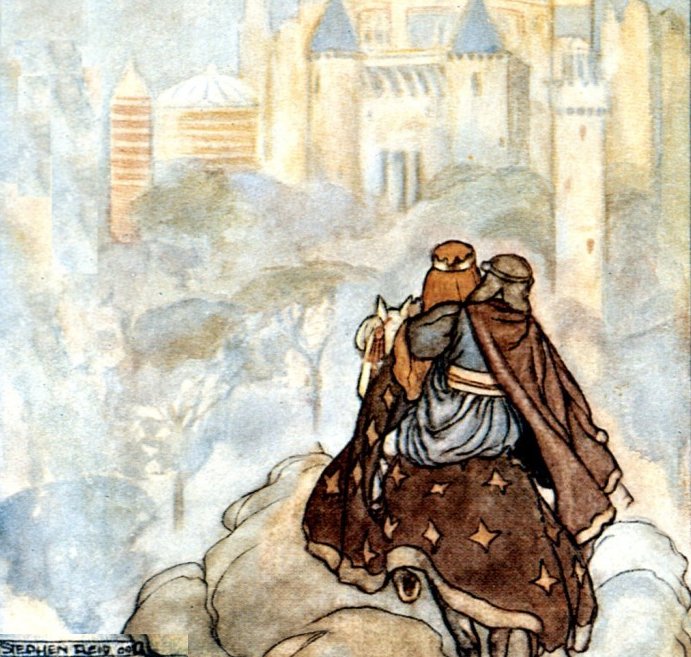Mag Mell: Irish Tradition Of Otherworldly Paradise That Could Be Reached Through Death And Glory
A. Sutherland - AncientPages.com - In the mythology of the Irish people, Mag Mell was a mythical, paradise-like realm with everlasting spring and sunshine. It was a place where all the trees were always full of magical fruit, flowers, and divine mead that could never be emptied.
The fairy Otherworld; a beautiful land of everlasting spring and sunshine, the Land of Youth (Tir na n-Og) or Mag Mell. Illustration by Stephen Reid in T. W. Rolleston's The High Deeds of Finn (1910) via Wikipedia
In Mag Mell lived gods accompanied by immortal heroes who were able to reach this place through death and glory.
All of them enjoyed endless happiness and harmony. Neither disease nor death or any other discomforts was known to them.
Mag Mell reminds us of god Odin’s Valhalla, the hall of the fallen Viking Warriors. Valhalla was the Viking warriors’ dream destination and Mag Mell was reserved for the Celtic heroes who died honorably.
In several Irish tales, Mag Mell was the Otherworld in the form of a floating island and the realm of the sea god Manannan Mac Lir. According to the Irish “Book of Invasions”, a sea god and king of the Fomorians, Tethra became a ruler of Mag Mell, after his death in the first battle of Mag Tuired, when the Tuatha De Danann took Ireland from the Fir Bolg, one of the four groups, who then inhabited the island.
Tradition has it that this ancient sea god never lived on land but made his home somewhere in the ocean, on an island with different names: Mag Mell (“plain of honey” or “the plain of delights”) or sometimes Emain Ablach (“island of apples”) and Tir Tairngiri (“land of promise”).
The ancient Irish imagined Mag Mell to be located in the south or south-west of Ireland or beneath the ocean. It was also considered a possible refuge for the Tuatha De Danann.
Mag Mell Is Unlike The Underworld In Other Mythologies
Mag Mell was accessible only to those who really deserved it. It was not a place similar to other realms of the dead like Hel’s dark dwelling place for the dead in Norse myths or a gloomy abode of Yama, the god of the underworld, who rules the hell and judges the dead, in Hindu texts.
This supernatural Celtic realm of everlasting youth, beauty, health, abundance, and joy, was never associated with a typical afterlife destination.
Mag Mell was believed to be an earthly paradise, accessible to divine beings and some earthly visitors, who became the chosen ones such as Cuchulainn or Tethra, Fionn mac Cumhaill, and others.
According to ancient Irish beliefs, time passes much slower in the Otherworld. As previously discussed on Ancient Pages, the Celtic Tree of Life served as a portal to invisible worlds and a source of sacred knowledge, guarded by the most enlightened ones.
This could explain why ancient Celts believed there were gateways leading from the material into the spiritual world, and why times passed slower in this mysterious realm, invisible to the naked eye. The nature and reality of the Celtic Otherworld sound almost like the modern concept of parallel universes.
Updated on February 21, 2024
Written by – A. Sutherland - AncientPages.com Senior Staff Writer
Copyright © AncientPages.com All rights reserved. This material may not be published, broadcast, rewritten or redistributed in whole or part without the express written permission of AncientPages.com
Expand for referencesMore From Ancient Pages
-
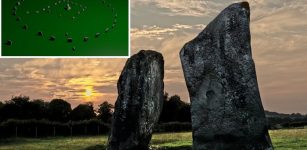 Mysterious Secret ‘Square’ Discovered Beneath Avebury Stone Circle
Archaeology | Jun 30, 2017
Mysterious Secret ‘Square’ Discovered Beneath Avebury Stone Circle
Archaeology | Jun 30, 2017 -
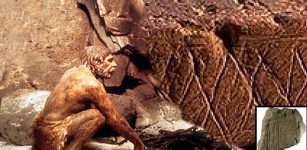 Is The Hashtag World’s Oldest Symbol And First Communication Attempt?
Ancient Symbols | Apr 27, 2018
Is The Hashtag World’s Oldest Symbol And First Communication Attempt?
Ancient Symbols | Apr 27, 2018 -
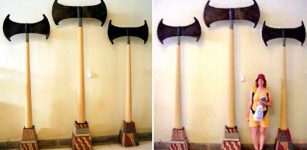 Giant Ancient Minoan Axes Used For Unknown Purposes
Artifacts | Nov 27, 2017
Giant Ancient Minoan Axes Used For Unknown Purposes
Artifacts | Nov 27, 2017 -
 Underwater Artifacts Shed New Light On Battle Of The Egadi Islands Between Romans And Carthage
Archaeology | Dec 16, 2020
Underwater Artifacts Shed New Light On Battle Of The Egadi Islands Between Romans And Carthage
Archaeology | Dec 16, 2020 -
 On This Day In History: King James I Of Scotland Was Assassinated – On Feb 21, 1437
News | Feb 21, 2017
On This Day In History: King James I Of Scotland Was Assassinated – On Feb 21, 1437
News | Feb 21, 2017 -
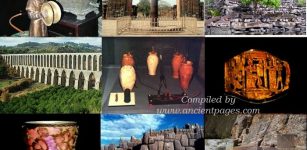 10 Remarkable Advanced Ancient Technologies Ahead Of Their Times
Ancient Technology | Jul 23, 2019
10 Remarkable Advanced Ancient Technologies Ahead Of Their Times
Ancient Technology | Jul 23, 2019 -
 The Assyrian Siege Ramp And Breached Walls At Canaanite City Of Lachish – Studied
Archaeology | Nov 10, 2021
The Assyrian Siege Ramp And Breached Walls At Canaanite City Of Lachish – Studied
Archaeology | Nov 10, 2021 -
 Hina Matsuri Festival – Sending Dolls In Boats Into The Ocean To Celebrate Girl’s Day In Japan – Ancient Shinto Tradition
Ancient History Facts | Mar 3, 2025
Hina Matsuri Festival – Sending Dolls In Boats Into The Ocean To Celebrate Girl’s Day In Japan – Ancient Shinto Tradition
Ancient History Facts | Mar 3, 2025 -
 On This Day In History: Coverdale Bible Printed In English For The First Time – On Oct 4, 1535
News | Oct 4, 2016
On This Day In History: Coverdale Bible Printed In English For The First Time – On Oct 4, 1535
News | Oct 4, 2016 -
 Obeah: Who Were The Feared Shadow Killers Of Jamaica?
Ancient Traditions And Customs | Sep 24, 2018
Obeah: Who Were The Feared Shadow Killers Of Jamaica?
Ancient Traditions And Customs | Sep 24, 2018 -
 Rocket Launch Into Space At Sibiu, Romania Took Place In 1555 – Sibiu Manuscript
Ancient Mysteries | May 29, 2014
Rocket Launch Into Space At Sibiu, Romania Took Place In 1555 – Sibiu Manuscript
Ancient Mysteries | May 29, 2014 -
 Two Well-Preserved Shipwrecks Found By Swedish Maritime Divers In Baltic Sea
Archaeology | Jan 30, 2018
Two Well-Preserved Shipwrecks Found By Swedish Maritime Divers In Baltic Sea
Archaeology | Jan 30, 2018 -
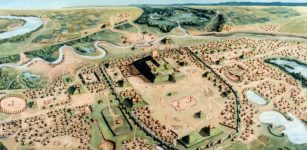 Story About Cahokia’s Lost Civilization Is Wrong – Archaeologist Says
Archaeology | Feb 14, 2020
Story About Cahokia’s Lost Civilization Is Wrong – Archaeologist Says
Archaeology | Feb 14, 2020 -
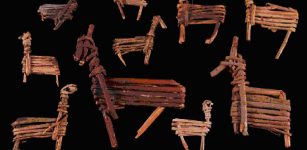 Tusayan Pueblo Ruins And Split Twig Figurines Tell Story Of People Who Once Inhabited The Grand Canyon
Civilizations | Nov 13, 2018
Tusayan Pueblo Ruins And Split Twig Figurines Tell Story Of People Who Once Inhabited The Grand Canyon
Civilizations | Nov 13, 2018 -
 Why Was The Face Of Mysterious Ust-Taseyevsky Stone Idol Suddenly Changed?
Archaeology | Jan 18, 2021
Why Was The Face Of Mysterious Ust-Taseyevsky Stone Idol Suddenly Changed?
Archaeology | Jan 18, 2021 -
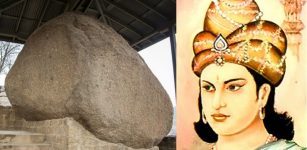 Mansehra Rock Edicts – Last Words Of Emperor Ashoka
Featured Stories | May 27, 2019
Mansehra Rock Edicts – Last Words Of Emperor Ashoka
Featured Stories | May 27, 2019 -
 Mystery Of Human Evolution – What Can Ancient Genes Tell Us About Who We Are?
Archaeology | Jun 2, 2022
Mystery Of Human Evolution – What Can Ancient Genes Tell Us About Who We Are?
Archaeology | Jun 2, 2022 -
 Peru’s Wari Culture And Their Ancient ‘Amunas’ Will Help Peru’s Water
Ancient Technology | Apr 13, 2015
Peru’s Wari Culture And Their Ancient ‘Amunas’ Will Help Peru’s Water
Ancient Technology | Apr 13, 2015 -
 Mystery Of Count St. Germain – He Claimed To Have Lived For Several Centuries
Ancient Mysteries | Sep 4, 2014
Mystery Of Count St. Germain – He Claimed To Have Lived For Several Centuries
Ancient Mysteries | Sep 4, 2014 -
 Crypts, Coffins, Artifacts And Wooden Church Remains Under The Floor Of Basilica In Poland
Archaeology | Mar 5, 2018
Crypts, Coffins, Artifacts And Wooden Church Remains Under The Floor Of Basilica In Poland
Archaeology | Mar 5, 2018

